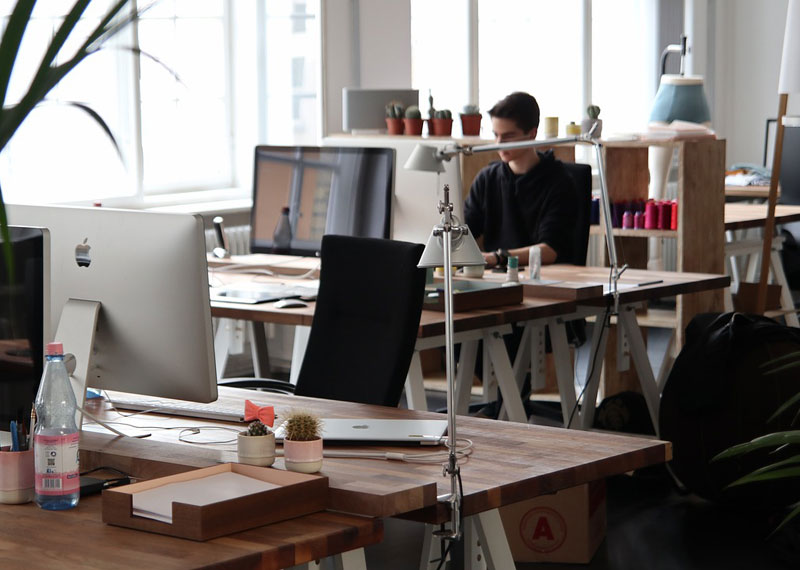Lockdown has taken its toll on both individuals and businesses, and many of us are feeling eager to return to normal, or at least a ‘new normal’. Since the Covid-19 lockdown, research shows that approximately 60 per cent of the UK’s adult population are now working from home, a transition that has been essential, yet difficult for many.
So, what happens when lockdown restrictions are lifted, and businesses have an opportunity to get back up and running? The government is set to release a series of papers which will outline its approach and advise businesses on how to return to work safely. Even with government regulations in place however, it will be up to you to go above and beyond for your employees and create an office environment that is safe, hygiene-focussed, and considerate of mental health needs.
In relation to a safe return of the workforce, Gary Peeling, Chief Executive Officer at Where The Trade Buys, said: “With shared spaces gradually reopening, businesses such as retail outlets, offices, factories, and schools will require numerous health and safety products to ensure the safeguarding of their staff, customers, and students. Before doors can reopen, careful planning will be needed in order to put the necessary protective equipment in place and enhance health and safety measures before employees return to the workplace.”
With this in mind, here are ten ways to ensure that your return to the workplace is smooth, safe, and positive:
1. Closely monitor government guidelines
As an employer, it is up to you to stay on top of all the recent information and act accordingly. Remember, even when government says it’s possible to return to work, that doesn’t mean you necessarily have to. Take in all the official guidance available to you and make a carefully-considered decision based upon your business and your employees’ needs.
2. Install social distancing floor stickers
When you do reopen the office, social distancing is going to be a challenge. According to the BBC, the “principles may not necessarily insist that workers strictly observe a two-metre social distancing rule”. However, where possible, you should try to adhere to social distancing in any way you can. Tools such as social distancing floor stickers make this a little easier — offering your employees guidance and reassurance that they are not getting too close to one another.
3. Implement a one-way system in the office
Another way to implement social distancing efforts in the office is to encourage a one-way system. If you have to ways in and out of your building, consider how these could be utilised so that your staff aren’t risking close physical contact.
4. Provide hand sanitisers and other cleanliness reminders
Cleanliness is key, and you need to up your hygiene procedures as much as possible. As you were most likely doing before the full lockdown came into place, encourage thorough handwashing, provide hand sanitisers wherever possible, and install health and safety posters as regular reminders around the office.
5. Make sure you’ve done a deep clean before you reopen
Before you open your doors once more and endeavour to return to ‘business as normal’, try to create as clean and hygienic a space as possible. Not only will starting on a fresh slate create a safer environment, but it will show your employers that you’re taking health and safety precautions with the utmost seriousness.
6. Provide your employees with PPE equipment is appropriate
If you want to go the extra mile, provide your employees with PPE equipment such as face masks and gloves. Depending on the environment you’re working in, fabric facemasks might also do the job.
7. Consider staff who use public transport or visit other premises
The previous point is especially applicable for staff members who use public transport to get into the office or those who have to visit various premises due to their role. Make sure you’re listening to the needs of each individual staff member so that you can provide extra support to those who might be more at risk.
8. Conduct one to one ‘back to work’ meetings
Managers should conduct one-to-one meetings with each staff member to make sure they feel supported and listened to. Chances are, each employee has had a completely different lockdown experience — some may have been working from home throughout with 100 per cent pay, whereas some may have been furloughed and faced financial stress or anxiety related to other issues. The only way you’ll be able to offer the support each staff member needs is to take the time to understand their needs individually.
9. Offer mental health support
In addition to these back-to-work meetings, you should make sure your workforce has access to ongoing mental health support. Each member of staff will likely have felt the impact of this crisis, and whether that has manifested itself in health anxiety, financial concern, or loneliness, you must show them that the company is there for them to provide ongoing emotional support. For more information and guidance, consult the resources available at Mind UK.
10. Wherever possible, make it optional
Finally, take into consideration that each staff member will be in a unique position, and for some, remote working might still be a safer and more productive option. Your employees will appreciate your flexibility and the fact that you are reviewing everyone’s circumstances individually. After all, if you’re a business that can work as productively online, it makes sense to allow people to continue doing so until they feel safe and confident to return to work.
Currently, it’s impossible to predict when you’ll be able to resume ‘business as usual’. Until then, carry on supporting your employees as best you can. When the moment to return to work finally does come however, take all the precautions you can in order to create a happy, healthy, and productive workplace dynamic.
This article was researched by UK print company Where The Trade Buys, currently producing PPE for UK workplaces, education spaces, shops, the NHS and more. The company has also been involved in manufacturing face visors for NHS essential workers in the fight against Covid-19.
Sources:
https://www.bbc.co.uk/news/business-52496636
https://www.mind.org.uk/information-support/coronavirus/coronavirus-and-your-wellbeing/













